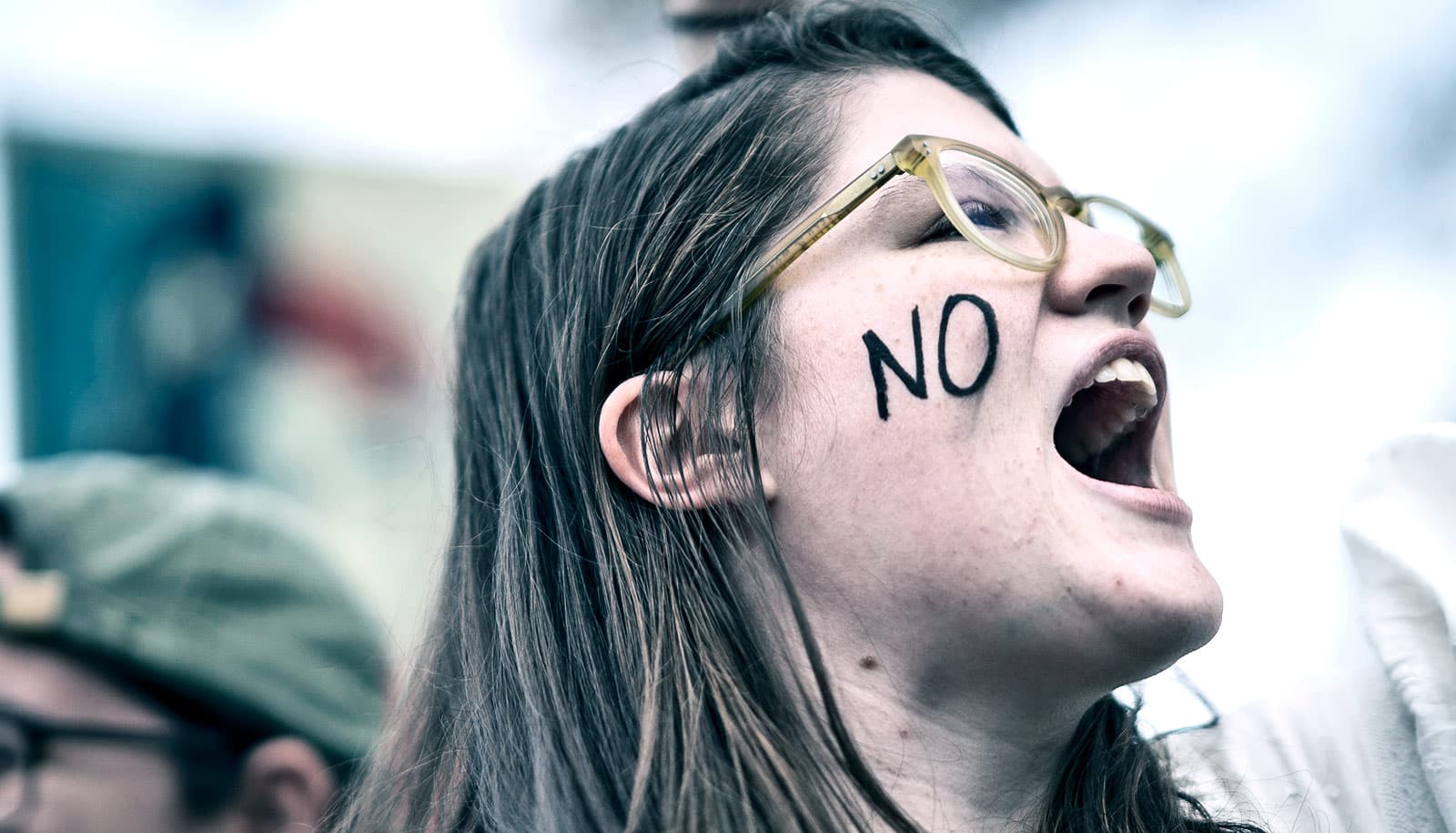Protests really do have an effect on election results, according to a new study based on 30 years of data.
The study finds that spikes in both liberal and conservative protest activity can increase or decrease a candidate’s vote by enough to change the final outcome.
“Many people are skeptical that protests matter to electoral outcomes, but our paper finds that they have a profound effect on voter behavior,” says study coauthor Sarah A. Soule, a professor of organizational behavior and of sociology at the Stanford University Graduate School of Business.
“Liberal protests lead Democrats to vote on the issues that resonate for them, and conservative protests lead Republicans to do the same. It happens on both sides of the ideological spectrum.”
How big is the effect?
On average, a wave of liberal protesting in a congressional district can increase a Democratic candidate’s vote share by 2 percent and reduce a GOP candidate’s share by 6 percent. A wave of conservative protests, like those by the Tea Party in 2010, will on average reduce the Democratic vote share by 2 percent and increase the Republican share by 6 percent.
On top of that, big protests by progressives have spurred increases in the quality of Democrats who decide to challenge incumbents. (Conservative protests haven’t had the same impact motivating Republican challengers, however.) That seems to be what has happened in 2018, when record numbers of women both marched in the streets and decided to run as Democrats for Congress, but the pattern isn’t unique to this year.
The study is based on a detailed analysis of both local protest activity and voting patterns in every congressional election from 1960 to 1990.
The data on protests came from news reports. The researchers focused only on local protests, which they scored by both their ideological leaning and their intensity or “salience.”
“Protests are a way of signaling discontent, and they inform politicians about the most salient issues.”
To rate the protests on an ideological spectrum, the researchers looked at each protest’s focal issues. Not surprisingly, given the anti-war and civil rights movements of the 1960s and 1970s, 90 percent of the protests during those decades were on the left side of the political spectrum. But the share of conservative protests increased gradually to 14 percent in the ’80s and 21 percent by 1990.
To rate “salience,” the researchers looked at whether the protests attracted large numbers of people; had organizational backing; attracted police presence; or resulted in damage, injuries, or death.
For example, in the 1968 election of Abner Mikva, a liberal challenger in Illinois, the district saw 40 protests that year, which the researchers scored at a salience level of 54—fairly high, but nowhere near as high as the protests during some other races. Mikva defeated both the Democratic incumbent in the primary and his Republican opponent in the general election.
Interestingly, conservative protests of similar intensity appear to give Republicans a proportionately bigger boost in vote share. The researchers say that probably reflects the fact that conservative street protests were rare until the 1990s, which probably made them more electrifying to Republican voters.
Multiple messages
The researchers argue that local political protests provide important signals to voters as well as to candidates and potential challengers. For voters, they can focus attention. To incumbent lawmakers, they are signals about intensity of local content or discontent. For prospective challengers, they can signal the incumbent’s vulnerability.
Indeed, the paper finds that an increase in liberal protest activity correlates with an increase in the number of “quality” Democratic challengers, such as those who have held elected offices before. The odds of a solid challenger entering a congressional race climbed from 20 percent to 50 percent as the intensity of protest activity increased.
“It’s a form of information-gathering,” says coauthor Daniel Q. Gillion, associate professor of political science at the University of Pennsylvania. “When politicians run for office, they try to know every single issue in their backyard as well as the sentiments of their constituents. Protests are a way of signaling discontent, and they inform politicians about the most salient issues.”
Gillion adds that the volume and intensity of progressive protests have been higher in 2018 than at any time since the late 1960s.
Other studies have found that violent protests can lead people to think poorly of the protesters. However, Soule and Gillion say they found little evidence that protests produce a backlash in actual voting behavior.
Has it been enough to affect the 2018 midterm elections?
“Based on these findings, unequivocally, yes,” says Soule.
The research appears in Social Science Quarterly.
Source: Stanford University


